METTL3 promotes glycolysis and cholangiocarcinoma progression by mediating the m6A modification of AKR1B10
- PMID: 36476503
- PMCID: PMC9730622
- DOI: 10.1186/s12935-022-02809-2
METTL3 promotes glycolysis and cholangiocarcinoma progression by mediating the m6A modification of AKR1B10
Abstract
Objective: N6-methyladenosine (m6A) RNA methylation is involved in governing the mechanism of tumor progression. We aimed to excavate the biological role and mechanism of the m6A methyltransferase METTL3 in cholangiocarcinoma (CCA).
Methods: METTL3 expression was determined by database and tissue microarray analyses. The role of METTL3 in CCA was explored by loss- and gain-of-function experiments. The m6A target of METTL3 was detected by RNA sequencing. The role of AKR1B10 in CCA was explored, and the association between METTL3 and AKR1B10 was confirmed by rescue experiments.
Result: METTL3 expression was upregulated in CCA tissue, and higher METTL3 expression was implicated in poor prognoses in CCA patients. Overexpression of METTL3 facilitated proliferation, migration, invasion, glucose uptake, and lactate production in CCA cells, whereas knockdown of METTL3 had the opposite effects. We further found that METTL3 deficiency inhibited CCA tumor growth in vivo. RNA sequencing and MeRIP-qPCR confirmed that METTL3 enhanced AKR1B10 expression and m6A modification levels. Furthermore, METTL3 directly binds with AKR1B10 at an m6A modification site. A CCA tissue microarray showed that AKR1B10 expression was upregulated in CCA tissue and that silencing AKR1B10 suppressed the malignant phenotype mentioned above in CCA. Notably, knockdown of AKR1B10 rescued the tumor-promoting effects induced by METTL3 overexpression.
Conclusion: Elevated METTL3 expression promotes tumor growth and glycolysis in CCA through m6A modification of AKR1B10, indicating that METTL3 is a potential target for blocking glycolysis for application in CCA therapy.
Keywords: AKR1B10; Cholangiocarcinoma; Glycolysis; METTL3.
© 2022. The Author(s).
Conflict of interest statement
The authors declare no competing interests.
Figures
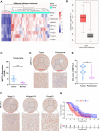



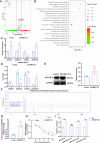
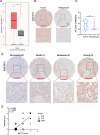
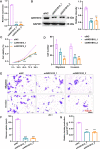
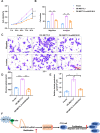
References
-
- de Jong MC, Marques H, Clary BM, Bauer TW, Marsh JW, Ribero D, Majno P, Hatzaras I, Walters DM, Barbas AS, et al. The impact of portal vein resection on outcomes for hilar cholangiocarcinoma: a multi-institutional analysis of 305 cases. Cancer. 2012;118:4737–4747. doi: 10.1002/cncr.27492. - DOI - PubMed
-
- Yang PC, Chen YJ, Li XY, Hsiao CY, Cheng BB, Gao Y, Zhou BZ, Chen SY, Hu SQ, Zeng Q, et al. Irreversible electroporation treatment with intraoperative biliary stenting for unresectable perihilar cholangiocarcinoma: a pilot study. Front Oncol. 2021;11:710536. doi: 10.3389/fonc.2021.710536. - DOI - PMC - PubMed
Grants and funding
LinkOut - more resources
Full Text Sources

